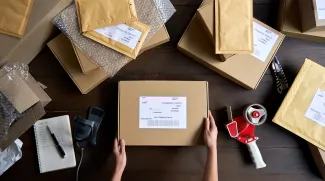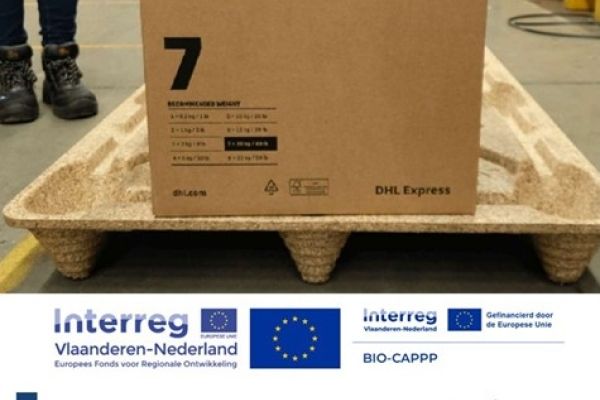Getting started with the checklist for sustainable e-commerce packaging.
The proposal for a new European Regulation on packaging and packaging waste imposes obligations on traders to make their packaging assortment more sustainable. Unfortunately, it is difficult for traders to determine which options are more sustainable. Firstly, the choice of packaging material strongly depends on the product range. Furthermore, both the material choice and the design of the packaging, as well as the later waste phase, have a significant impact on the sustainability of a chosen packaging solution. Therefore, the Green Last Mile advisory document compiles all this information and provides e-commerce traders with a tool to make sustainable packaging choices.

What is a sustainable packaging?
To make sustainable packaging choices as an e-commerce trader, it is important to understand what sustainable packaging entails. VITO addresses this with a coherent, comprehensible, and scientifically supported advisory document. In collaboration with VIL, VITO conducted research on sustainable e-commerce packaging as part of the 'Green Last Mile' project.
Through a sample analysis, the key packaging types and elements were identified. Based on available scientific research, we documented the scientific consensus on sustainable options and practices for e-commerce packaging. The scientific background document provides this scientific foundation, structured around three key pillars: material choice, product design, and the waste phase.
To apply this scientific consensus in practice, we have developed a practical advisory document for e-commerce traders. It includes a simple scoring system for various options and practices related to different packaging choices.

Material choice, product design, and waste phase
Just like the scientific background document, the practical advisory document focuses on three pillars: material choice, product design, and waste phase. The advisory document does not make recommendations regarding the required packaging form and suitable packaging type based on the properties of the shipped product and the delivery method used. The advisory document and its accompanying scoring system help make the chosen packaging form as sustainable as possible. It guides packagers and traders towards the most sustainable option for packaging materials, packaging elements, and their composition.
In the context of material choice, the following aspects are addressed: the environmental impact of packaging materials, the use of renewable raw materials and recycled materials, and damage to the environment and health.
Additionally, the sustainability of packaging is determined by product design. Sustainable packaging finds an optimal balance between the right amount of protection and the right amount of material. Product loss must be prevented at all times, but it is also important to avoid 'overpackaging.' This refers, on the one hand, to packaging empty space or 'air,' and, on the other hand, to excessive use of materials. If multiple packaging materials are used, it is recommended to consider disassembly. Emphasis is also placed on facilitating and raising awareness of reuse, and the advice is to add disposal instructions and identification codes to packaging.
A third crucial pillar is the waste phase. The general advice is to align the packaging as much as possible with material recycling. This means taking into account the presence of contaminants, packaging components that disrupt the recycling process, and difficult-to-recycle material combinations.














